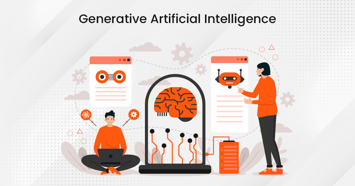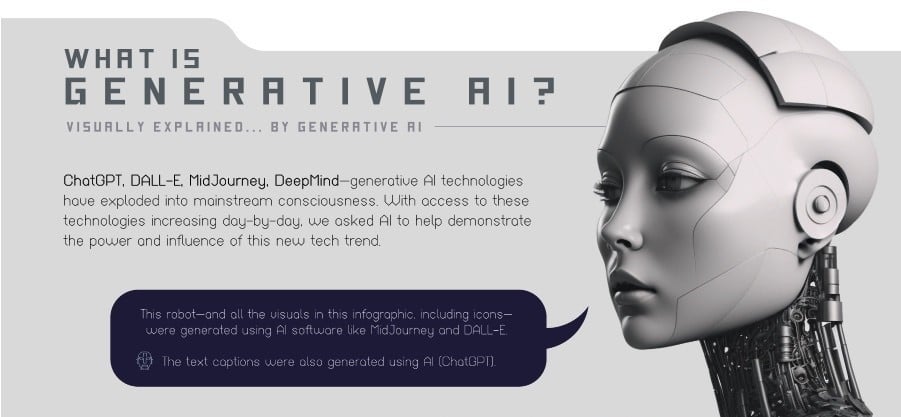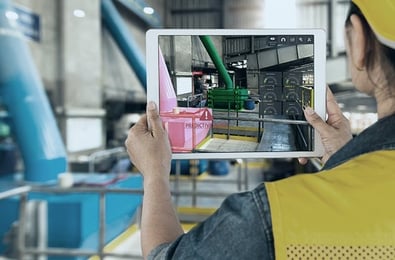 Using generative artificial intelligence (AI) and imaging is becoming increasingly popular among different industries. In fact, it is set to become a market worth $1.3 trillion by 2032 with a compound annual growth rate of 42%.
Using generative artificial intelligence (AI) and imaging is becoming increasingly popular among different industries. In fact, it is set to become a market worth $1.3 trillion by 2032 with a compound annual growth rate of 42%.
There’s a rising demand for generative AI programs like Bard by Google and ChatGPT by OpenAI, which enable users to generate content by inputting data. The engineering and construction industries can likewise benefit from these technologies, as it makes imaging more efficient for specific projects.
As AI is being adopted into engineering at a rapid pace, let's take a glance at how it currently benefits engineers and construction professionals.
Engineering & Construction Before AI
Before diving into AI’s contributions to these industries, consider how engineering and construction operated before these technologies.
Making buildings and other structures involves meticulous planning, such as figuring out their potential dimensions and how beams and walls should be positioned to ensure safety. Photography is vitally important in the construction process as engineers need to document current projects to show progress. This documentation also allows them to use past projects as references for upcoming structures, taking inspiration and knowledge from successful creations. Digital cameras, such as DSLRs, were the devices used in such processes. Cameras like the Canon 5DS, have large sensors that capture as much light as possible, producing clear and detailed images. They can also be equipped with different lenses, like zoom lenses, for extreme closeups of structures. Such qualities are also advantageous when tracking building changes, as engineers can compare photos years apart. This way, they can monitor cracks, damaged bearings, and other hazards that need repair.
Today, AI can make these tasks easier.
AI Can Automate Structural Designs
As mentioned above, generative AI can make building planning easier. Take ChatGPT & DALL – E from Open AI, for example. These AI platforms allows users to enter prompts to produce humanlike texts. As such, engineers can utilize it in designing floor plans or pipelines by providing them with data, like the size of the building or the number of levels it will have. However, some are skeptical about using AI for these purposes, as the chatbot relies on the information you feed it to respond. Thus, it can include miscalculations or incomplete answers—a massive no in engineering because it puts the structure at risk.

With further technological advancement and the help of human intervention, however, AI can be an engineer’s best friend. Instead of making calculated engineering or construction plans, it can be used first to help professionals explore design options. They can feed the AI project specifications and goals to suggest and make images of potential building layouts. Robot developer Dusty Robotics creates mobile robots that automate the layout process on a construction site, allowing workers to follow its instructions for more efficient work.
AI Can Help Assess Project Feasibility
 Determining the feasibility of future projects is essential in construction and engineering. This can streamline construction processes and save time and costs. Moreover, it will detect any issues with the project or plan, allowing engineers to make the necessary changes to improve its overall viability.
Determining the feasibility of future projects is essential in construction and engineering. This can streamline construction processes and save time and costs. Moreover, it will detect any issues with the project or plan, allowing engineers to make the necessary changes to improve its overall viability.
Traditionally, EPC contractors are tasked with conducting feasibility studies, which can be time-consuming—especially if they have many comments or revisions to give the engineers in charge of the project. Engineers can run their plans and projects through AI first and make improvements so that when it reaches the EPC contractor, fewer things will need to be changed. GPTs, like OpenAI Playground and Jasper.ai, can be customized to meet the user’s demands. These are also designed for professionals rather than ordinary AI users, making them fit for the engineering industry.
AI Optimizes Resource Allocation
Construction projects require several tools and materials for completion. Lacking these at any point during construction can set a project back, preventing it from completion before the deadline.
Luckily, engineers can use AI for more accurate resource allocation. This technology can assist in determining how to distribute materials and tools among different construction teams at any point during the project’s construction. In doing so, the project stays on track. This also makes resource distribution and allocation more organized so that there are no overlaps.
NeevaAI is a search engine that combines ChatGPT and various large language models to produce the best results for its user. It can provide specific, accurate responses coupled with real-time updates. NeevaAI is also capable of multi-source searches, producing results supported with summaries and references that engineers can take advantage of when planning resource allocation.
AI for real-time building monitoring and inspection
Besides making structures, engineers, and construction professionals are responsible for safe construction procedures. They must ensure workers and pedestrians are not harmed by the digging, lifting, and other processes necessary to create a structure.
 Generative AI helps with this by monitoring the construction in real-time, using drones and sensors, along with traditional cameras. For instance, it can compare the current project’s state to its blueprint, allowing it to determine any deviations from the plan that could result in tragedy, like a misaligned support beam. It can alert professionals of this error, prompting rectification or necessary evacuation. Built Robotics’ remote robot Guardian functions like so, preventing construction mishaps and disasters. Such technologies are also helpful when inspecting buildings years after their construction. Generative AI can compare its current state to the original, alerting users of weak points like cracks or leaning walls, which could help builders avoid potential tragedies.
Generative AI helps with this by monitoring the construction in real-time, using drones and sensors, along with traditional cameras. For instance, it can compare the current project’s state to its blueprint, allowing it to determine any deviations from the plan that could result in tragedy, like a misaligned support beam. It can alert professionals of this error, prompting rectification or necessary evacuation. Built Robotics’ remote robot Guardian functions like so, preventing construction mishaps and disasters. Such technologies are also helpful when inspecting buildings years after their construction. Generative AI can compare its current state to the original, alerting users of weak points like cracks or leaning walls, which could help builders avoid potential tragedies.
Generative AI and imaging will continue to flourish in engineering. Despite this, professionals should double-check AI’s suggestions and intervene when necessary if it presents miscalculations or errors for safer construction processes.
Interested to know, how to leverage technology, to drive efficiency and innovation in Engineering, Procurement, and Construction? Download our free e-book, “Predictive Analytics and AI: A Match Made in EPC Heaven” today.

